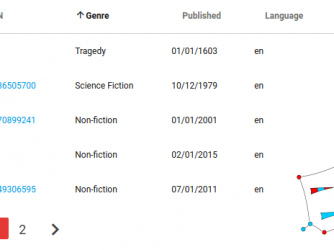The mu.semte.ch framework consists of a number of components. A number that is growing steadily and will keep growing in the future. If you’re new to the…
What is a semantic microservice? What I mean (in this post) with a semantic microservice is a small self-sustainable piece of software. That software should…
In the mu.semte.ch framework we use EmberJS in the frontend. The data is retrieved through Ember Data or AJAX requests, via the identifier and dispatcher, from the microservices…
By adding 2 new microservices to our regular mu.semte.ch setup (https://github.com/mu-semtech/mu-project) we can create a very nifty workflow that will automatically expand semantic files in…
This article is the final part in our series on the ember-data-table addon. In a first blog post we introduced ember-data-table, an easy-to-use component to visualize your Ember…
The delta-service has already been mentioned and used in previous blog posts on reactive programming to make microservices hook into changes introduced by other microservices. In this…
The mu.semte.ch framework is the ideal playground for the developer that wants to try a new language. Using the standards set out by the framework…
The mu-project repository offers a good starting point to bootstrap a new mu.semte.ch project. The docker-compose.yml to start from consists of 3 core components: mu-identifier,…
What is an application without the data it manipulates? Very little indeed. Storing the initial content and updating the data model is often solved with…
The microservices are one of the core components of the mu.semte.ch architecture. Each microservice has its own responsibility, providing a tiny part of the application’s functionality…









